A common path for our students pursuing the StrongFirst Elite designation is to start with the kettlebell instructor certifications before earning the bodyweight and barbell credentials. All four—SFG, SFG II, SFB, and SFL—earn you Elite status. But the path isn’t written in stone. Our principles transcend modalities so you can get stronger whichever way you choose first. The lessons learned in one will help with others. Here is how bodyweight can lead to the barbell and kettlebell.
I am something of an anomaly in the StrongFirst system in that I have taken the SFB and then the SFL without having gone through the SFG certification. Today, I want to show you how taking the SFB set me up for a successful SFL and taught me valuable skills that I’ll use in a future SFG.
Many exercise beginners start their regimen with an undeveloped sense of body awareness. For these people, adding external load to poor technique is not the best recipe for a positive outcome. Rather, learning good movement patterns and practicing proper lifting principles with their bodyweight “load” is a better way for them or for anyone to get started with strength training. Not only does it prepare joints, soft tissues, muscles, and motor control for future externally loaded training, the confidence it builds helps quash common fears associated with barbells, kettlebells, and any other weight equipment.
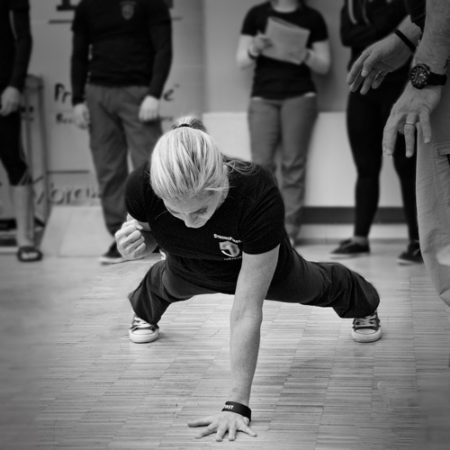
Three Bodyweight Drills that Make You Stronger—Whatever You Want to Lift
At the SFB, we learned two important principles for bodyweight that also translate to weighted implements: feed-forward tension and irradiation. Most lifters are familiar with feed-back tension: the heavier the weight, the tighter you need to be in order to make the lift. But most don’t practice feed-forward, which involves tensing BEFORE even lifting. Pavel discussed this brilliantly in Power to the People.
Plank: Going from 0 to 100 in Full-body Tension
The StrongFirst plank is the foundation of many bodyweight movements. It’s the basis for learning to create tension in the abs, glutes, and lats. Because being prone is low-risk, the plank is the perfect introduction to the skill of feed-forward tension and complete body linkage. As such, it is highlighted in both the SFB and SFL manuals (and the SFG manual, so I’m told) as a drill to enhance bigger lifts. Make no mistake, this is not the typical, garden-variety plank you see in gyms. This is a strength-building plank with a greater purpose than a “how long can you hang out?” contest. All your power muscles are recruited in this plank.
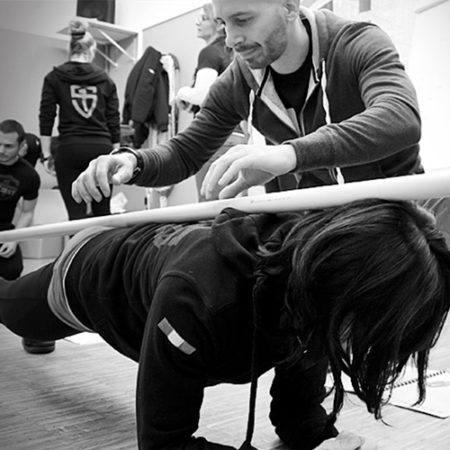
Hollow Position: Challenging Your Anterior Core with Leverage
The hollow position is the key starting point for bodyweight exercises such as the tactical pull-up, the one-arm pushup, and the hanging leg raise. While it lacks a direct barbell equivalent, it is an extremely effective drill to teach anti-extension, a foundational skill used in many lifts with strength tools. My SFB instructors, Master Jon Engum and fellow Winnipeg-er Cole Summers, quickly noticed that I had trouble preventing hyperextension in the hollow position. This tension leak meant that my plank wasn’t as strong as it could be and that I couldn’t maximize the benefits from the tension that I did create. With consistent practice over the weekend, I felt more confident and increasingly stronger in my one-arm, one-leg pushup (OAOLPU) test attempt than I had felt coming in; indisputable proof that strength really is a skill. The slow gains I made in the three months preparing for the certification (and failing my first attempt) were eclipsed in a mere five weeks post-cert thanks to the great coaching I received.
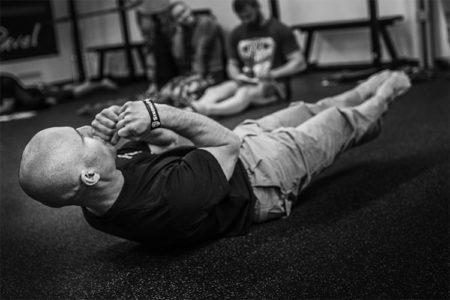
Full hollow position holds may be very challenging for beginners because their untrained midsections are unable to manage the difficult leverage that comes from extended limbs. That’s where the importance of building skill comes in. I have successfully regressed the hollow position by shortening the levers (tucking the arms as the picture above) and with variations of the common “dead bug” exercise with older clients, keeping the principle of anti-extension intact while they learn in an appropriately challenging environment. These drills can improve their skill in preventing hyperextension as a precursor to more demanding movements with external loads.
Bridge: Core and Glute Coordination
Pavel has stated on many occasions: the abs, glutes, and grip are your biggest neural generators. The StrongFirst bridge is both a core and glute builder. The pattern teaches you to maintain a strong core brace while fully extending your hips with a maximal glute contraction. Practicing to bridge this way deals with the tendency for many to cheat the movement by hyperextending their lumbar spine which fakes hip extension and eases the core bracing demand. An often overlooked aspect of this drill is that it requires a stable upper body, forcing one to maintain tension while dynamically moving the lower half in a fashion highly important to many athletic endeavors.
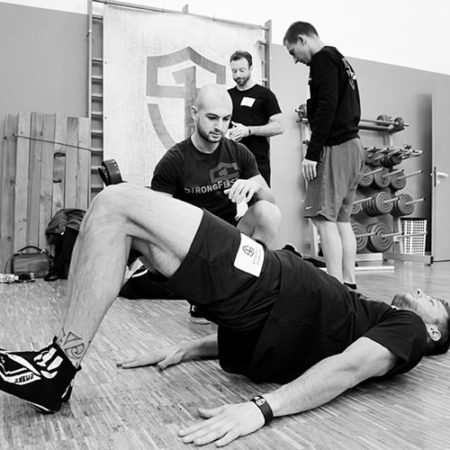
One-arm, One-leg Pushup: Full Body Linkage
The SFB uses these drills to work up to the ultimate test of full-body linkage—the one-arm, one-leg pushup for men and one-arm pushup for women. Pull the kneecaps to your groin. Cramp your glutes. Tilt your pelvis and “squeeze your abbies.” Tense and flare your lats. (Those of you familiar with Pavel’s writings will recognize these cues). Without tension, one collapses. Too much tension and you can’t move. This dichotomy adds an extra dimension to the skill: the ability to dial into just the right amount of tension at just the right time. Although the OAOLPU is not a pre-requisite to kettlebell or barbell training, the tension principles apply. Make sure to understand them well and practice before lifting a challenging weight.
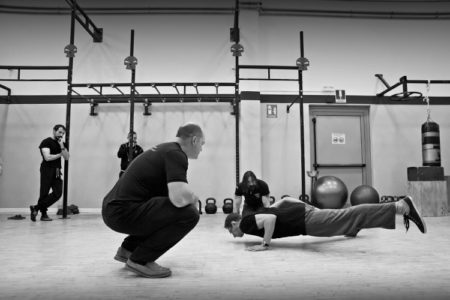
Bodyweight Training for Real-life Strength—and the Gateway Towards External Load
Since I began my training career just over seven years ago, I have spent most of my time working with deconditioned older adults and injured workers looking to return to their occupation. Many of them are afraid of getting hurt, of re-injuring themselves, or are just looking to start to move better. I’ve found many times that introducing the bridge and plank as modeled by StrongFirst have given them the freedom to begin their practice in a low-fear environment while improving their strength and skill. That is a recipe for a positive outcome.
I have had numerous clients simultaneously practice the SF bridge in conjunction with hip mobility and hinge patterning drills derived from the FMS curriculum. Many eye me suspiciously when I place a kettlebell at their feet to deadlift for the first time, thinking it will be too heavy to lift. They are surprised, if not a little shocked, when they shoot right up with the weight. Bodyweight training skills gave them strength they did not know they possessed. This practice of building confidence and trust in their abilities took the fear right out of learning to add barbell or kettlebell lifts to their training.
One of the most successful things I do with students is relating their bodyweight drills to barbell lifts I’m wanting to introduce. They recognize the “standing plank” as the start position of many lifts—front squat, Zercher squat, and the military press. Creating tension in the setup before even lifting the weight out of the rack helps ensure spinal safety through the lift. In fact, we spent a great deal of time at the SFL learning to setup properly for optimal tension. On a personal note, I was very good at getting tight and becoming “one with the bar” to start these lifts. I credit that to my long practice on planks and training for the OAOLPU thanks to the help of my instructors. Keeping the tension throughout the lift is the lifelong practice of strength as a skill and still took some practice (and always will), but the hours of practice from bodyweight drills had familiarized me with the skills. Even so, my SFL lead instructor, Dr. Michael Hartle, was able to spot “leakages” in my setup that I continue to address. That’s the value of a great coach.
Additionally, the standing plank shows up again at the finish of sumo and conventional deadlifts. And if you look closely, you’ll notice that the strong hip extension movement that finishes them is akin to the strong contraction practiced in the bridge. The body linkage learned in the OAOLPU practice creates a sound foundation of feed-forward tension and irradiation that only gets magnified with the feed-back tension the barbell or kettlebell will give. The result: a tight unit ready to safely lift heavy weight and reach strength goals.
Confidence with Bodyweight Leads to Courage to Add Load
By first learning these skills and patterns with bodyweight movements, solid safety and performance skills are in place when the student is ready to progress to using external load. Success with maintaining tension while practicing the movement patterns in a low-risk setting will provide students with the confidence to test their mettle with iron when the time calls.
Though no stranger to kettlebells, my instructor route through StrongFirst certifications will have me work to achieve my “entry into the StrongFirst system” last. As I begin my preparation to take the SFG certification, I’m using my SFB and SFL skills as a foundation on which I will improve my kettlebell skills. I have a clearer view of the lockout position of the swing after spending so much time on the deadlift. The snatch will challenge me to maintain the same position with a greater degree of upper torso mobility. The double kettlebell front squat and the one-arm press will magnify the tension I’ve learned to create in the set- up for the barbell squat variations and the military press variations, respectively. While the SFG will add new skills to my toolbox, the principles that underpin our strength system remain constant. Different modalities simply challenge us to apply them in different loading conditions.
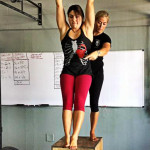
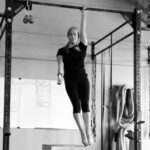
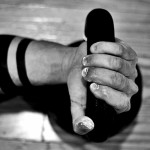
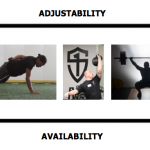


I am an enthusiast of the StrongFirst philosophy, a graduate of physical education and a student of the English language, so I use the articles to study both subjects …
Quer ver esse artigo em português?